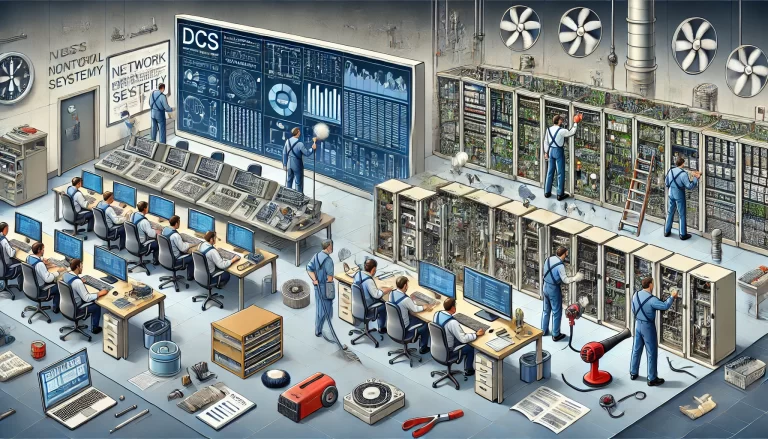1. General Principles for I/O Allocation
1.1 Redundancy Principle
To comply with the single-fault tolerance requirement, redundant devices should be assigned to different controllers or I/O modules to ensure that failure in one does not affect the entire system.
1.2 Power Isolation Principle
DO points may have different power sources (e.g., 24VDC or 220VAC, powered by DCS or the field). To avoid interference, signals with different power types should be assigned to separate I/O modules.
1.3 Device Signal Centralization
Signals related to the same equipment (e.g., pump start/stop, feedback, status) should be grouped in the same controller or cabinet to facilitate maintenance and commissioning.
1.4 Integration and Maintenance Friendliness
Analog modules should be installed before digital modules within a baseboard for clear separation. Reserve a few spare channels in each module for future expansion or fault replacement.
1.5 PID Loop Centralization
PID loops should have their measurement and control signals placed in the same module to reduce response time. For 2-out-of-3 logic configurations, all signals should be in the same controller to minimize delay.

2. I/O Point Calculation Method
The total DCS I/O count includes signals from instrument discipline, electrical discipline, and communication points. Proper estimation prevents design mismatches and supports accurate budgeting.
2.1 Analog Input (AI)
Typical sources:
Thermocouples (J, K, T, N, etc.)
RTDs (Pt100, Cu50, etc.)
Analog current/voltage (4-20mA, 0-10V, etc.)
Pulse signals
Examples:
Single thermocouple = 1 AI
Dual thermocouple (separate readings) = 2 AIs
Multi-point thermocouple = # of points = # of AIs
Two-wire transmitters (temperature, pressure, etc.) require additional 24VDC wiring consideration.
2.2 Analog Output (AO)
Typical AO signals (4-20mA, 0-10V) control actuators, VFDs, or control modules.
1 AO per controlled device, typically used for:
Control valves
VFD frequency setting
Actuator positioning
2.3 Digital Input (DI)
DI signals include:
Alarm contacts from pressure/temperature/level switches
Status feedbacks from motor starters, limit switches
TTL/CMOS levels
1 DI per contact
2.4 Digital Output (DO)
DO signals trigger external devices via relay output:
Solenoid valves
Indicators
Alarm buzzers
Contactor coils
Typical DO per device:
On/Off command: 1-2 DOs
ESD (Emergency Shutdown): 1 DO
2.5 I/O Point Count for Typical Equipment
2.5.1 On/Off Electric Actuators
AI: 1 (position feedback)
DO: 2 (open/close commands)
DI: 4 (open/close feedback + torque alarms)
2.5.2 Modulating Electric Actuators
AI: 1 (position feedback)
AO: 1 (control signal)
DI: 2 (torque alarms)
Optional AI: 1 (status feedback for smart actuators)
2.5.3 VFD Drives
AI: 1 (frequency feedback)
AO: 1 (frequency setpoint)
DO: 1 (run/stop command)
DI: 2 (run status + fault alarm)
2.5.4 General Motors (Direct Start)
DO: 1 (start command)
DI: 2-3 (run status, fault alarm, location selection)
AI: Up to 3 (current monitoring for 3-phase motors)
2.6 Electrical System Considerations
Motor control logic should be clearly defined. A three-location control scheme (MCC cabinet, local station, DCS) requires additional DI for selector switches.
2.7 Soft Starter and VFD Controls
For each soft starter or VFD:
DI: Run status, fault status
DO: Start command, fault reset
AI/AO: Frequency signal in/out
2.8 Forward-Reverse Motor Control
DI: 4 (status + faults)
DO: 2 (direction control)
AI: Up to 3 (current per phase)
2.9 Communication Points
For systems integrating PLCs or smart instruments:
1 point per communication node
Note protocol (Modbus, Profibus, Ethernet/IP)
Not counted as hardware I/O, but important for system configuration workload
Typical redundancy margin: add 20% spare channels

3. Summary
Applying these principles ensures system reliability, maintainability, and accurate budgeting during system integration and engineering phases.
